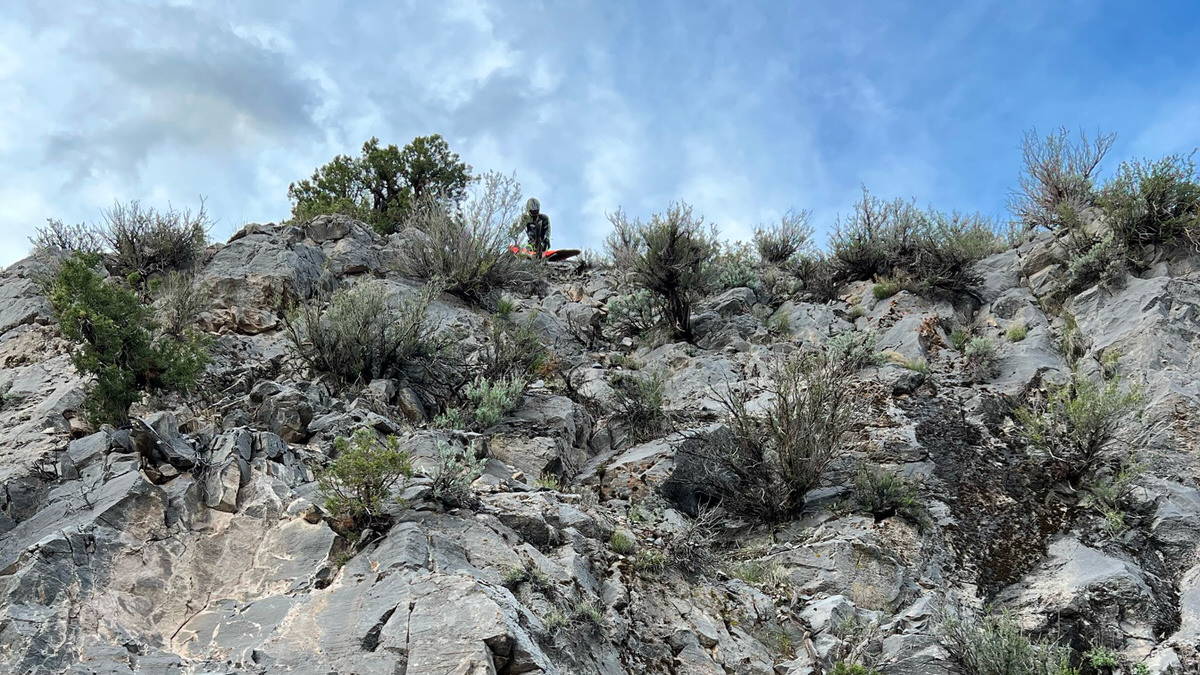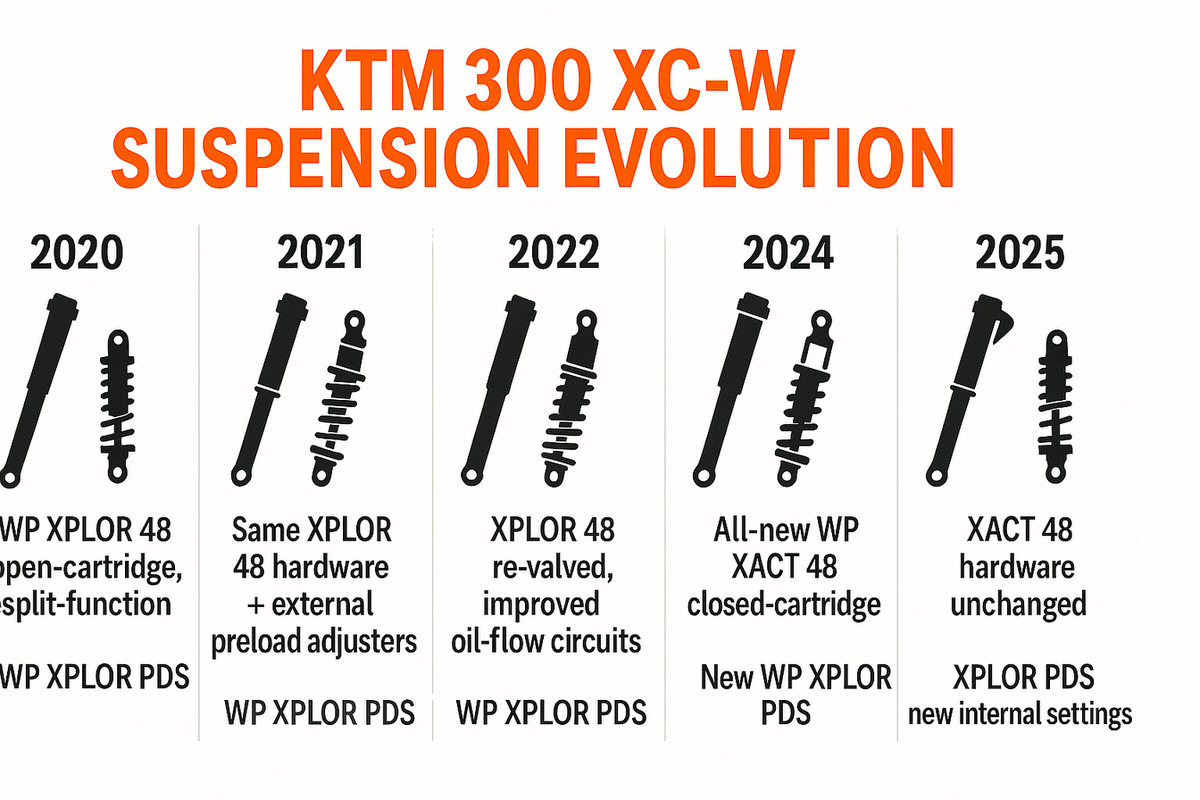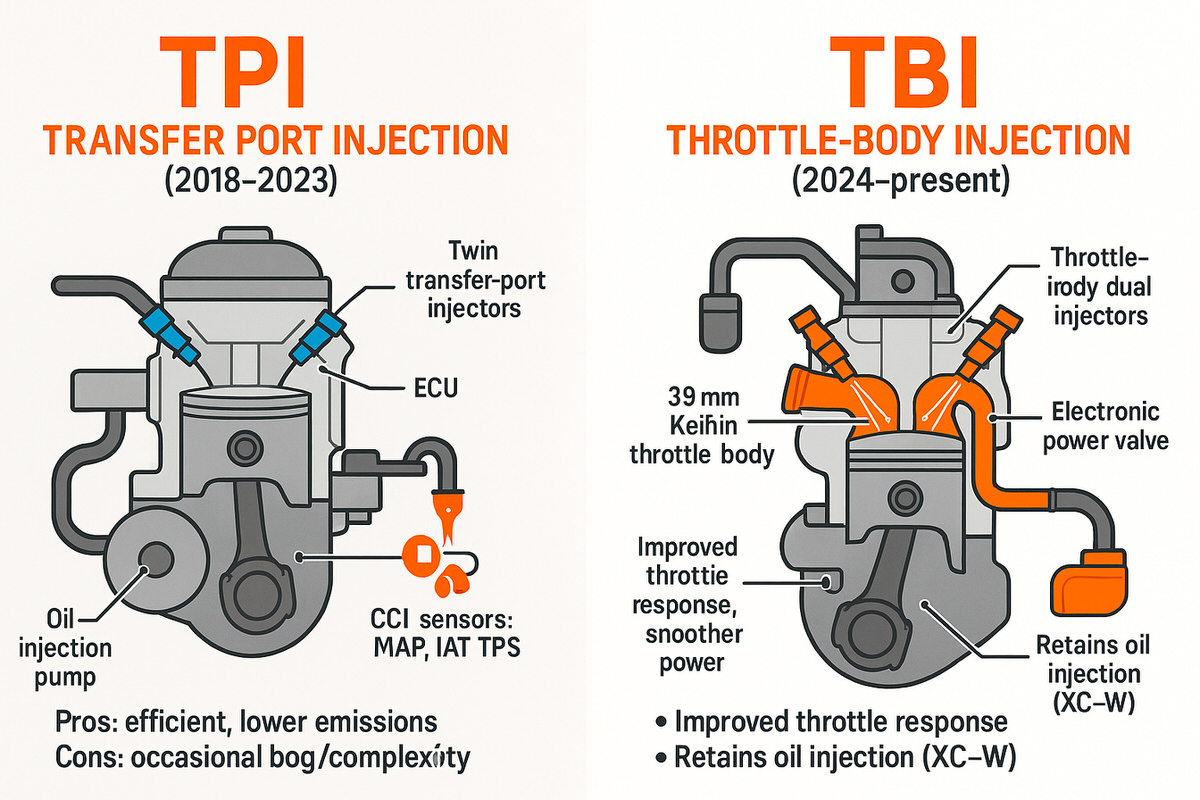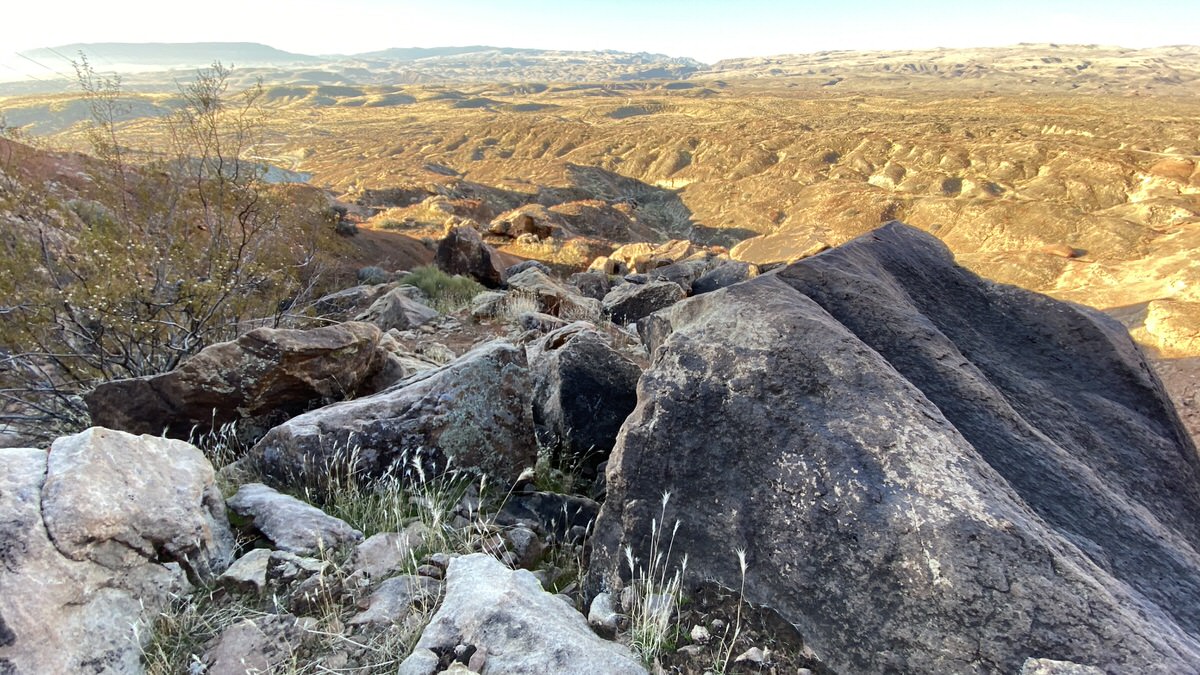The Ultimate Guide to Utah Hard Enduro Riding
Utah offers some of North America's most challenging hard enduro terrain. This comprehensive guide covers everything from technical trail progression to the state's most extreme riding areas.

Utah isn’t just another state with dirt bike trails - it’s the hard enduro capital of North America. From the technical single track of the Wasatch Mountains to the extreme rock formations of Moab, Utah offers terrain that rivals anything in Europe’s hard enduro scene. This guide breaks down everything you need to know about conquering Utah’s most challenging terrain.
What Makes Utah Hard Enduro Special
Diverse Technical Challenges
Utah’s geology creates a perfect storm of hard enduro obstacles:
- Slickrock: Moab’s famous grip-then-slip surfaces
- Loose Rocky Climbs: San Rafael Swell’s decomposed granite
- Technical Single Track: American Fork Canyon’s root and rock combinations
- High Altitude: 10,000+ foot trails that test bike and rider
- Desert Extremes: From snow to 110°F heat, sometimes in the same day
Year-Round Riding Opportunities
Unlike most hard enduro destinations, Utah offers riding 12 months a year:
- Spring (March-May): Prime time for desert areas
- Summer (June-August): High altitude mountain single track
- Fall (September-November): Perfect temps everywhere
- Winter (December-February): St. George and lower elevation desert
Skill Progression: From Intermediate to Extreme
Level 1: Building Your Foundation
Before tackling Utah’s extreme terrain, master these intermediate areas:
Recommended Starting Areas:
- Five Mile Pass (Utah County)
- Open terrain with optional obstacles
- Practice areas for every skill level
- 30 minutes from Salt Lake City
- AF Canyon - Forest Lake Trail
- Legitimate single track without extreme consequences
- Rocky sections to practice clutch control
- Bail-out options if overwhelmed
- Corner Canyon (Draper)
- Technical climbs without exposure
- Rock gardens at manageable speeds
- Easy access for after-work practice
Level 2: Stepping Up to Hard Enduro
Ready for real challenges? These trails bridge the gap:
Northern Utah Technical Progression:
- Provo Canyon - Shingle Mill Trail
- Sustained rocky climbs
- Off-camber sections
- Water crossings add complexity
- American Fork Canyon - Ridge Trail 157
- High altitude technical riding
- Exposure introduces mental challenges
- Multiple line choices in rock sections
- Bear Lake Highline Trail
- 22 miles of ridge riding
- Technical descents with consequences
- Navigation skills required
Level 3: True Hard Enduro Territory
These trails separate serious riders from weekend warriors:
The Big Three:
- Five Miles of Hell (San Rafael Swell)
- Actually 7-8 miles of pure technical terrain
- Massive rock ledges and off-camber sections
- No easy lines - commit or turn around
- GPS mandatory - easy to get lost
- Pritchett Canyon (Moab)
- Vehicle-sized boulders
- Technical climbs with serious exposure
- Multiple “no fall zones”
- Spectator-friendly if you like pressure
- Hell’s Revenge Behind the Rocks (Moab)
- Steep slickrock climbs and descents
- Off-camber sections with 100+ foot exposure
- Technical rock obstacles between climbs
- Hot as hell in summer (name isn’t random)
Level 4: Extreme - Proceed with Caution
For riders who’ve mastered everything else:
Utah’s Most Extreme:
- Mineral Basin Descent (AFC): Loose, steep, consequential
- Steel Bender (Moab): 4+ rated jeep trail on a bike
- Golden Spike (Moab): All-day technical marathon
- Poison Spider Mesa (Moab): Exposure and technical difficulty
Essential Bike Setup for Utah Hard Enduro
Suspension is Everything
Utah’s varied terrain demands versatile suspension:
Fork Settings (WP XACT 48 Example):
- Compression: 8-12 clicks from closed
- Rebound: 10-14 clicks from closed
- Air pressure: 10% less than standard
- Oil level: 10mm higher for bottoming resistance
Shock Settings:
- High-speed compression: Open 1-1.5 turns
- Low-speed compression: 8-12 clicks
- Increase spring rate 1 size for rocky terrain
- Fresh oil every 30 hours minimum
Protection is Mandatory
Essential Guards:
- Radiator braces (not just guards)
- Wrap-around handguards with reinforced mounts
- Heavy-duty skid plate (2-piece preferred)
- Case savers for clutch and ignition covers
- Fork leg guards for rock deflection
Tire and Wheel Setup
Front Tire Options:
- Dunlop AT81EX (aggressive intermediate)
- Michelin Medium (predictable on rocks)
- Bridgestone M59 (excellent intermediate)
- Battlecross X31 (aggressive soft/intermediate)
- Shinko 216 MX (90-100/21 soft - excellent soft terrain)
Rear Tire Strategy:
- Trials tire for maximum rock traction
- Shinko 505 Hybrid for mixed terrain
- IRC VE-33S for superior extreme terrain grip
- IRC JX8 for technical terrain
- Shinko R520DC for extreme conditions
- Shinko 216 MX for soft terrain
- TUbliss system for pressure adjustability
Pressure Guidelines:
- Tubes: 12-14 PSI (heavy duty only)
- TUbliss: 6-9 PSI without pinch flat worry
- Mousse: 8-10 PSI equivalent
Regional Deep Dive
Northern Utah: High Altitude Technical
American Fork Canyon Complex
- Season: June-October
- Elevation: 6,000-10,500 feet
- Character: Rocky single track through forests
- Challenges: Altitude, rocky switchbacks, exposure
- Must Ride: Ridge Trail 157 full loop
Local Beta: Start early to avoid afternoon thunderstorms. The rocks get slippery when wet. Tibble Fork Reservoir parking fills by 9 AM on weekends.
Central Utah: Desert Technical
San Rafael Swell
- Season: March-May, September-November
- Elevation: 5,000-7,000 feet
- Character: Remote desert with technical canyons
- Challenges: Navigation, heat, technical rock sections
- Must Ride: Complete Color Loop (45 miles)
Survival Tips: Carry 4L of water minimum. Download offline maps. Tell someone your route. Cell service is non-existent.
Southern Utah: Slickrock Paradise
Moab Area
- Season: March-May, September-November
- Elevation: 4,000-6,000 feet
- Character: Iconic slickrock with extreme exposure
- Challenges: Heat, exposure, tourist traffic
- Must Ride: Pritchett Canyon if you have the skills
Reality Check: Slickrock isn’t as grippy as you think. It’s confidence-inspiring until it isn’t. When in doubt, momentum is your friend.
Training for Utah Hard Enduro
Physical Preparation
Utah’s terrain demands total body fitness:
- Core Strength: For technical standing positions
- Grip Endurance: Rocky terrain destroys forearms
- Cardio: Altitude multiplies effort required
- Flexibility: For body positioning in obstacles
Skills to Master
Essential Techniques:
- Clutch Control: Utah is all about traction management
- Body Position: Weight placement changes everything
- Line Selection: The obvious line is rarely best
- Momentum Management: Know when to charge and when to finesse
- Trail Repair: You will drop your bike - know how to fix it
Mental Game
Hard enduro is 50% mental:
- Visualize successful line execution
- Break big obstacles into segments
- Know your limits and respect them
- Ride with better riders to improve
- Accept that walking sections is part of the sport
Safety Considerations
Never Ride Alone
Utah’s remote terrain is unforgiving:
- Minimum 2 riders, 3-4 preferred
- Carry emergency beacons (InReach/SPOT)
- Share GPS tracks with someone at home
- Know basic first aid
Weather Awareness
Utah weather changes fast:
- Desert areas: 40°F temperature swings daily
- Mountains: Afternoon thunderstorms June-August
- Flash flood risk in canyons
- Snow possible above 8,000 feet year-round
Emergency Contacts
- Search & Rescue: 911 (if you have signal)
- BLM Rangers: (435) 636-3600
- Life Flight Coverage: Highly recommended
Logistics and Planning
Multi-Day Expedition Planning
Northern Utah Base Camps:
- Park City: Access to Wasatch trails
- Heber: Central to AFC and Provo Canyon
- Logan: Bear Lake and Northern trails
Southern Utah Hubs:
- Moab: Ground zero for slickrock
- Green River: San Rafael Swell access
- St. George: Winter riding paradise
Trail Access and Regulations
Know Before You Go:
- Some trails require OHV registration
- Spark arrestors mandatory on public land
- Sound limits enforced near residential areas
- Wilderness areas are off-limits
- Stay on designated trails always
Resources and Community
GPS and Navigation
Essential Apps:
- Trailforks: Best for single track
- OnX Offroad: Land ownership info
- Gaia GPS: Topo maps and planning
- Avenza: PDF map compatibility
Local Knowledge
Shops and Groups:
- Mountain Goat Sports: Cedar Valley (suspension specialists)
- Utah Trail Riders Association: Trail maintenance and advocacy
- Utah Hard Enduro Facebook Group: Current conditions and ride planning
Events and Races
Can’t Miss Events:
- Moab Hard Enduro (April)
- Wasatch Ridge Ride (August)
- Desert 100 (November)
- Local hare scrambles for practice
The Bottom Line
Utah hard enduro isn’t just about conquering difficult terrain - it’s about pushing your limits in some of the most beautiful and challenging landscapes in North America. Whether you’re working up to your first technical trail or seeking the next extreme challenge, Utah has terrain that will humble and reward you in equal measure.
Start within your comfort zone, progress methodically, and always respect the mountain. The rocks don’t care how fast you were at sea level, and gravity is undefeated. But with proper preparation, quality suspension setup, and a healthy respect for the terrain, Utah’s hard enduro scene will provide challenges and memories for a lifetime.
Ready to tackle Utah’s extreme terrain? Make sure your bike is properly prepared with our suspension tuning service specifically dialed for rocky technical riding.
Have you conquered any of Utah’s extreme trails? Share your experiences and tips in the comments below.
Tagged with:
About Mountain Goat Sports
Professional motorcycle repair & suspension tuning for Utah hard enduro riders. Specializing in KTM, Husqvarna, and GasGas dirt bikes.
Related Articles

Red Trail Guide: San Rafael Swell's Technical Challenge
The Red Trail in the San Rafael Swell delivers one of Utah’s most rewarding technical single track experiences. This ...

Suspension Setup for Rocky Terrain: The Utah Dialing Guide
Rocky terrain demands specific suspension settings. This comprehensive guide breaks down exactly how to set up your W...

TBI vs TPI Explained: KTM's Fuel Injection Systems Decoded
KTM's shift from TPI to TBI has riders confused. This technical deep-dive explains both fuel injection systems, their...

Winter Riding in Warner Valley: Utah's Desert Escape
When northern Utah's trails are buried under snow, Warner Valley offers perfect riding conditions with 60-degree temp...
Need Service for Your Bike?
Our expert technicians are ready to help with all your motorcycle needs. From suspension tuning to engine rebuilds, we've got you covered.